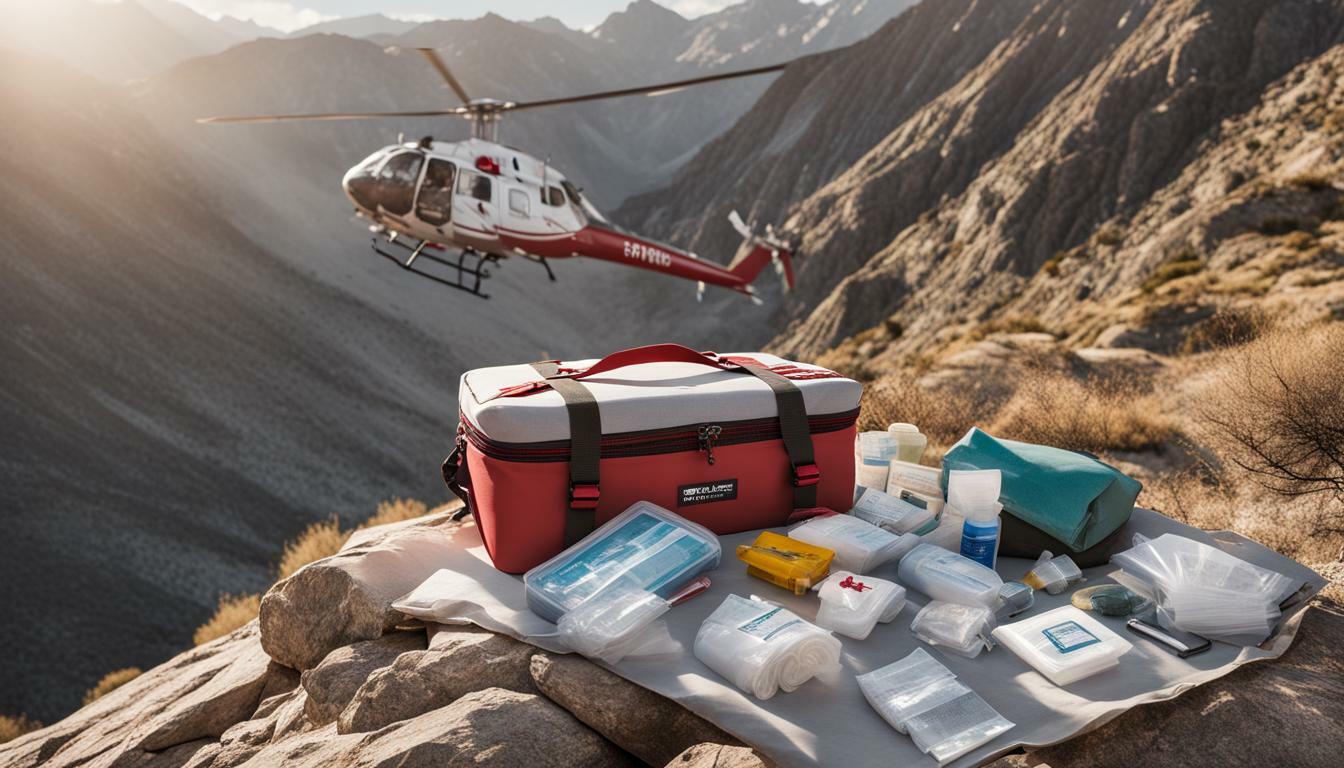As a scenic helicopter photographer, capturing stunning aerial images is undoubtedly an exhilarating experience. However, it’s essential to prioritize safety while embracing this adventurous profession. With the inherent risks involved in aerial photography, emergency preparedness is key, and that includes having a well-stocked first aid kit on board.
While it’s impossible to predict potential accidents, having a first aid kit on hand can significantly reduce the impact of injuries. From cuts and bruises to more severe medical emergencies, a first aid kit can provide the necessary medical attention before seeking professional medical care.
Key Takeaways:
- First aid kits are essential for aerial photography safety
- Proper emergency preparedness is crucial in mitigating potential risks
- Prioritizing health while capturing breathtaking aerial landscapes is essential
Helicopter Emergency Preparedness
Scenic helicopter photography is a thrilling and rewarding experience, but it also comes with inherent risks. To ensure the safety of aerial photographers, it is crucial to have proper helicopter emergency preparedness. This includes essential safety gear and equipment that should be included in a first aid kit for aerial photographers.
When preparing for a helicopter photography session, it is important to consider the specific needs of this activity, such as the potential for high altitudes, strong winds, and unstable conditions. Therefore, your emergency preparedness kit should include items that are specifically required for helicopter photography safety.
Essential Safety Gear and Equipment
| Item | Purpose |
|---|---|
| First Aid Kit | Includes items such as bandages, antiseptics, and other essential medical supplies to address potential injuries that can occur during aerial photography. |
| Harnesses and Straps | Provides safety and stability for photographers during aerial shoots, preventing falls and injury. |
| Protective Gear | Includes helmets, goggles, and other safety equipment to protect against potential hazards. |
These items are critical for ensuring the safety and stability of photographers during aerial shoots. Additionally, it is important to consider the specific needs of each photography session and adapt the kit accordingly.
Emergency Action Plan
In addition to having the necessary safety gear and equipment, it is important to have a comprehensive emergency action plan in place. This includes identifying potential risks, preparing for emergencies, and communicating effectively with the flight crew.
Photographers should also be trained in first aid and have a basic understanding of emergency response procedures. This can include CPR and handling medical emergencies.
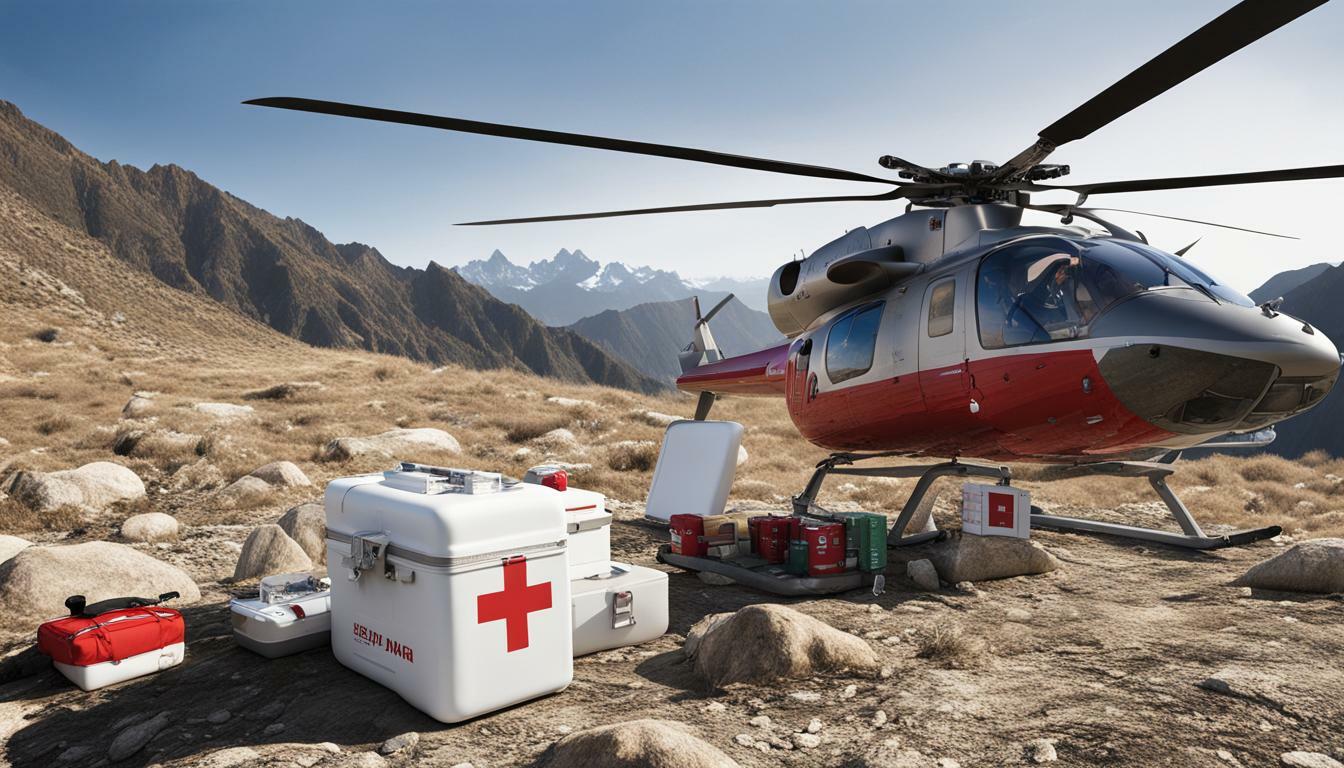
By preparing for potential hazards and having the necessary safety gear and equipment, aerial photographers can minimize risks and enhance their overall safety. Helicopter emergency preparedness is crucial for ensuring a successful and secure photography experience.
First Aid Supplies for Aerial Photographers
As a scenic helicopter photographer, having a well-stocked first aid kit is essential to ensure your safety during aerial shoots. Accidents can happen, and it is crucial to be prepared for any injury that may arise. The right first aid supplies can make a big difference in treating wounds quickly and effectively.
Bandages of various sizes and shapes are a must-have in your first aid kit. You should also include adhesive tape, gauze pads, and triangular bandages. These items can be used to dress up cuts, scrapes, and other injuries.
In addition, antiseptics such as alcohol wipes, hydrogen peroxide, and antibiotic cream should be included in your kit to prevent infections. Pain relief medication like ibuprofen or aspirin should also be considered and included in your kit.
For more severe injuries, include items such as a splint, scissors, and a tourniquet. These supplies can help stabilize fractures and cut off bleeding until medical help arrives.
It is important to note that your first aid kit should be tailored to your specific needs and the type of photography you engage in. Consulting with a medical professional can provide insight into what you should include in your kit.
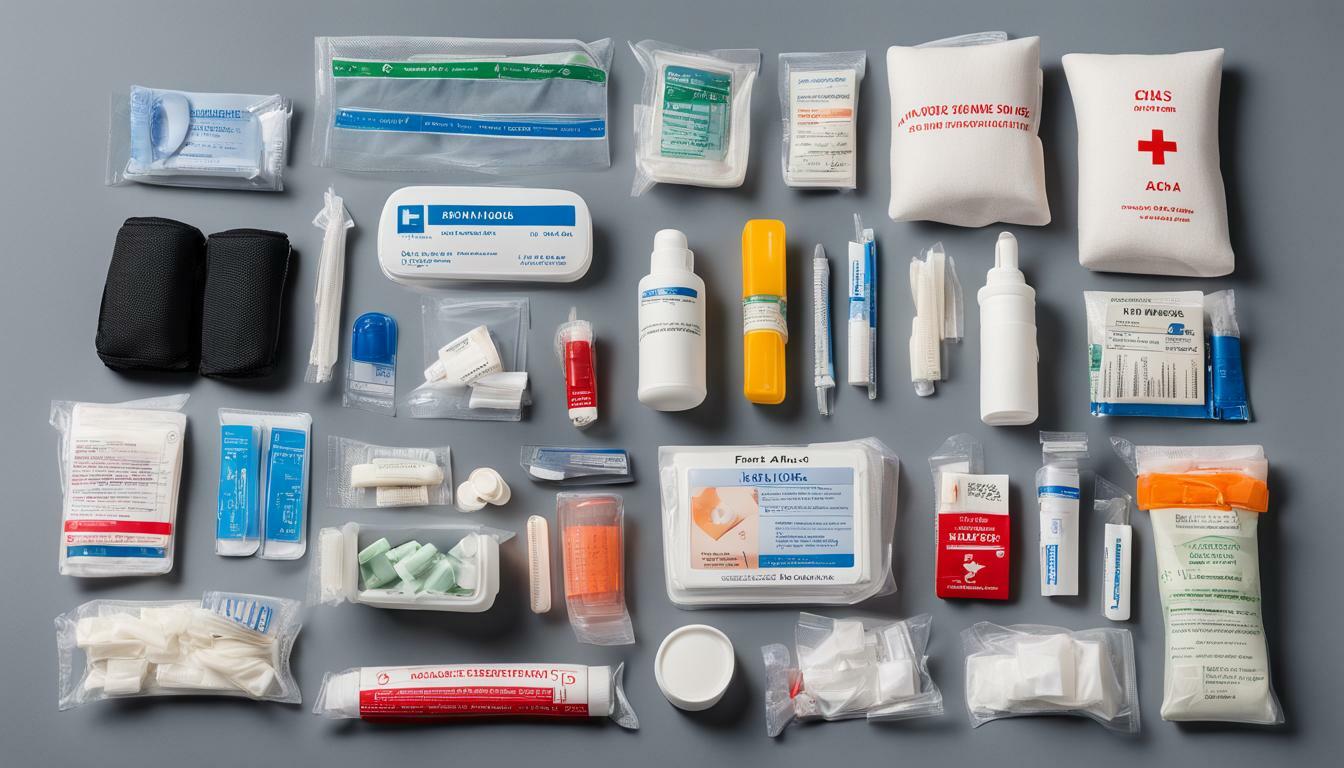
Remember, having the right first aid supplies is only one aspect of ensuring your safety during aerial photography. Consult with a professional to ensure you have the appropriate equipment and training to handle any emergency situations that may arise.
Helicopter Photography Safety Equipment
Helicopter photography involves a higher level of risk than other forms of photography due to the unique conditions and environment during aerial shoots. As such, there is specific safety equipment required for aerial photography to ensure the safety and stability of photographers while capturing stunning images from above.
Harnesses and Straps: One of the most crucial pieces of safety equipment for helicopter photography is a harness or strap system. These tools keep photographers securely fastened to the helicopter, preventing falls or other accidents. Additionally, safety straps can be used to secure equipment and ensure nothing is dropped during the shoot, which could pose a danger to the helicopter or people below.
| Equipment | Image |
|---|---|
| Harnesses and Straps | 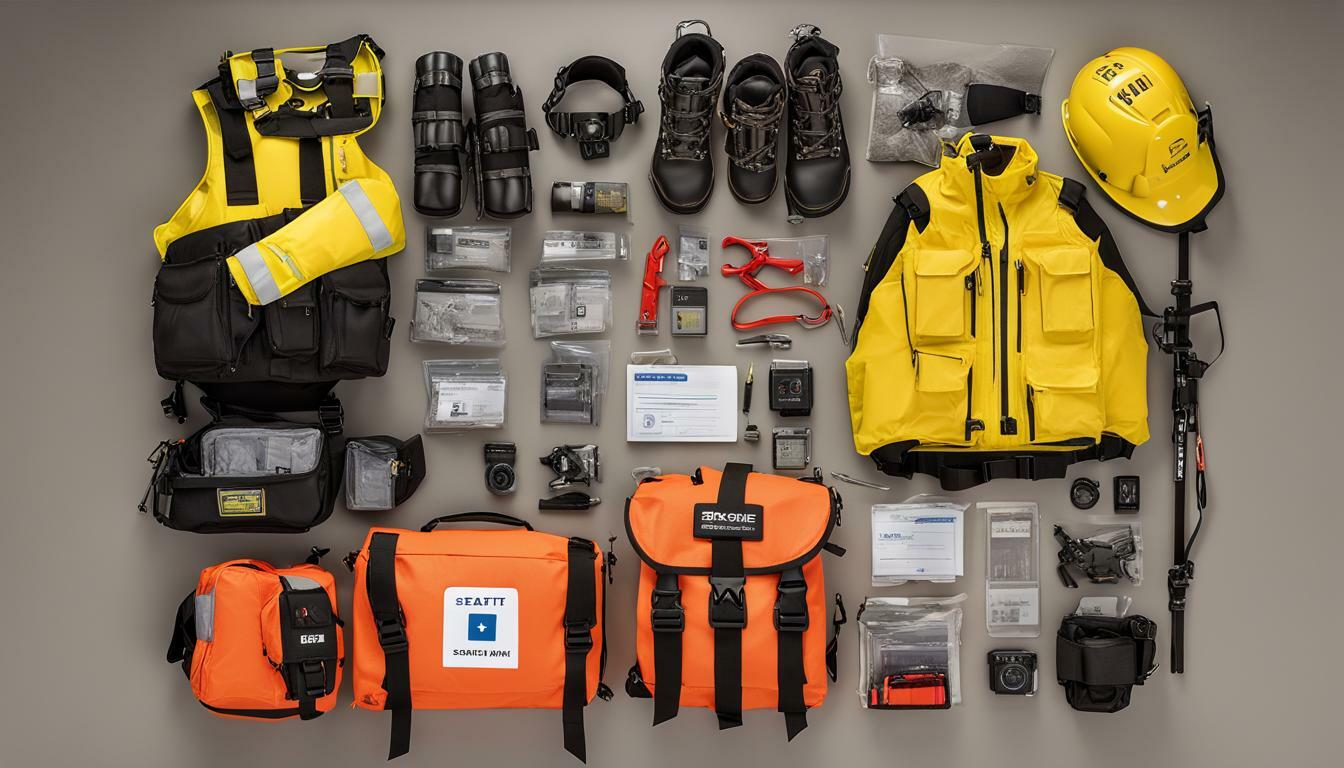 |
Protective Gear: Protective gear is another critical element of helicopter photography safety equipment. This includes items like helmets, gloves, and eye protection, which can protect photographers from flying debris and other hazards. Protective gear is especially crucial in open-door helicopter photography, where there is a higher risk of injury from external elements.
Stabilizers: Stabilizers are devices that help photographers keep their cameras steady during turbulence or sudden movements. These devices are essential for capturing sharp images from above and can help prevent accidents or injuries caused by losing control of equipment.
Overall, the right safety equipment is essential for photographers to perform their jobs safely and efficiently. With the proper safety gear and equipment, photographers can focus on capturing stunning images without compromising their safety or that of their crew and passengers.
Emergency Response Kits for Aerial Photographers
As an aerial photographer, being prepared for emergencies is crucial. Emergency response kits are an essential part of the gear you need to have with you on every flight. These kits contain basic supplies that can help you survive a crash or an unexpected landing.
Some of the items that you should include in an emergency response kit for aerial photographers are:
| Item | Description |
|---|---|
| Emergency Blanket | An emergency blanket will help keep you warm in case of unexpected landings during cold weather. |
| Whistle | A whistle can help you signal for help if you are stranded or lost. |
| GPS Locator | A GPS locator can help rescue teams locate you in case of an emergency. |
| Water Purification Tablets | In case of an unexpected landing in a remote location, water purification tablets can help make water safe for consumption. |
Having an emergency response kit with you at all times can help minimize the risks of emergencies and give you peace of mind while you are up in the air. Make sure that your emergency response kit is well-stocked and up to date before every flight.

Remember, being prepared is always better than regretting it later. Along with the emergency response kit, ensure that you have all the needed safety equipment and gear to prevent emergencies as well.
Helicopter Rescue Equipment
In emergency situations, having the right helicopter rescue equipment can make all the difference. A well-equipped first aid kit is essential, but additional gear may be necessary for rescue scenarios.
Ropes and carabiners are necessary for aerial rescue operations. The ropes should be durable and long enough to reach the ground from the helicopter. Carabiners are used to connect ropes to harnesses or other equipment and should be easy to use and secure.
Emergency beacons are also important, especially in remote locations. These beacons emit a signal that rescue teams can detect, making it easier to locate the helicopter and those on board. It’s crucial to ensure that the beacon is fully functional and charged before each flight.
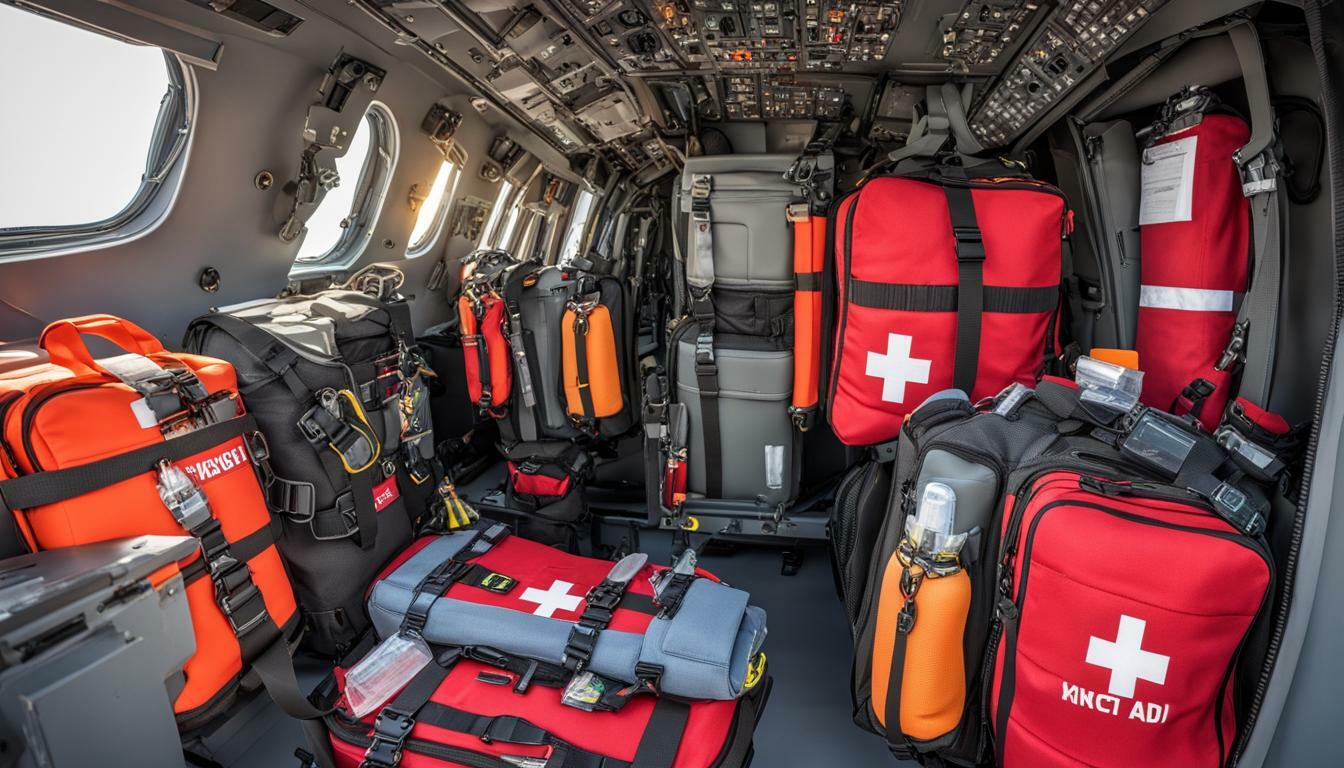
Training in rescue techniques and equipment usage is also essential for aerial photographers. It’s important to learn how to use rescue equipment efficiently and safely.
Regular maintenance and safety checks on rescue equipment are vital to ensure they are in good working condition and ready for use in emergencies. Each piece of equipment should be inspected for wear and tear or damage that can compromise its effectiveness.
By investing in helicopter rescue equipment and proper training, aerial photographers can enhance their safety and be prepared for any emergencies that may arise during their flights.
First Aid Training for Aerial Photographers
First aid training for aerial photographers is not only essential, but it can also be a lifesaver in emergency situations. From minor cuts and scrapes to more severe injuries, knowing how to provide proper medical attention can prevent further harm or even save a life.
Whether you’re a professional photographer working on an assignment or an amateur enthusiast exploring new territory, investing in first aid training will equip you with the necessary knowledge and skills to handle potential injuries and accidents.
- Learn CPR: CPR is a crucial skill that can help save lives in emergency situations. Knowing how to perform CPR can help sustain life until medical help arrives.
- Handling Medical Emergencies: First aid training can help prepare you to handle medical emergencies like seizures, fainting, and heart attacks, ensuring the best possible outcome for the victim.
- Providing Basic Medical Care: Properly cleaning and dressing wounds, preventing infection, and providing basic care can help prevent minor injuries from escalating into more severe medical conditions.
At the end of the day, it is important to prioritize safety when embarking on aerial photography missions. First aid training for aerial photographers should be considered an integral part of any safety plan, alongside other safety equipment and emergency preparedness measures.
Scenic Helicopter Photography Safety Tools
Scenic helicopter photography is a thrilling experience that requires proper safety gear and equipment to ensure both optimal safety and stunning aerial images. Besides the essential first aid kits, there are additional safety tools and equipment that photographers should consider. Here are some of the most critical scenic helicopter photography safety tools:
| Item | Purpose |
|---|---|
| Camera Harnesses | Camera harnesses play a vital role in ensuring the safety of both the photographer and the camera. They help distribute the weight of the camera evenly, reducing strain on the neck and shoulders during extended aerial shoots. |
| Lens Filters | Lens filters are essential in ensuring the optimal quality of aerial images. They help reduce glare, regulate light exposure and protect the lens from scratches or damage. |
| Stabilizers | Stabilizers are critical in capturing stable and high-quality aerial images. They help balance the camera and minimize shaky movements, resulting in sharper and clearer images. |
Incorporating the above scenic helicopter photography safety tools alongside other essential gear and equipment provides photographers with the necessary support for both optimal safety and exceptional aerial images.

Importance of Aerial Safety Checks
When it comes to aerial photography, safety should always be a top priority. Conducting regular safety checks is a crucial part of ensuring a secure and successful photography experience. Safety checks should be carried out before every flight, with emphasis placed on inspecting equipment, assessing weather conditions, and communicating with the flight crew.
Before takeoff, it is essential to inspect all safety gear, including harnesses, safety straps, and protective equipment. All safety equipment should be securely fastened and in good working condition. It is also important to assess weather conditions, including wind speed, visibility, and cloud cover. Weather conditions can significantly impact the safety and stability of the helicopter during a photography session.
Communication with the flight crew is also vital. Photographers should ensure they are aware of all safety procedures and protocols, including emergency landing procedures and evacuation routes. It is essential to establish clear communication channels with the flight crew and have a designated emergency response plan in place.
Aerial safety checks are critical in mitigating potential risks and ensuring a safe and successful photography session. By following best practices for aerial safety gear and conducting regular safety checks, photographers can have confidence in their equipment and focus on capturing stunning aerial landscapes.

Essential Safety Tips for Scenic Helicopter Photographers
If you’re planning on capturing breathtaking aerial landscapes from a helicopter, it’s crucial to prioritize your safety. Here are some essential safety tips to keep in mind:
- Secure your equipment: Ensure that your cameras and other equipment are properly secured and unable to fly out of the helicopter. Use straps and harnesses to keep everything in place.
- Use your seatbelt: Always keep your seatbelt on during the flight, even if you’re not actively taking photos. This is especially important during takeoff and landing.
- Communicate with the pilot: Make sure to communicate clearly with the pilot about your photography plans and any potential safety concerns. They’re there to help keep you safe.
- Be aware of your surroundings: Keep an eye on your surroundings and be mindful of any potential hazards, such as power lines or other aircraft.
- Prepare for emergencies: Have a clear understanding of emergency procedures, such as how to use a safety harness or evacuate the helicopter in case of an emergency.
- Observe weather conditions: Always check the weather forecast before your flight. If conditions aren’t suitable for flying, reschedule your shoot for another day.
By following these safety tips, you can enjoy a secure and successful scenic helicopter photography experience.
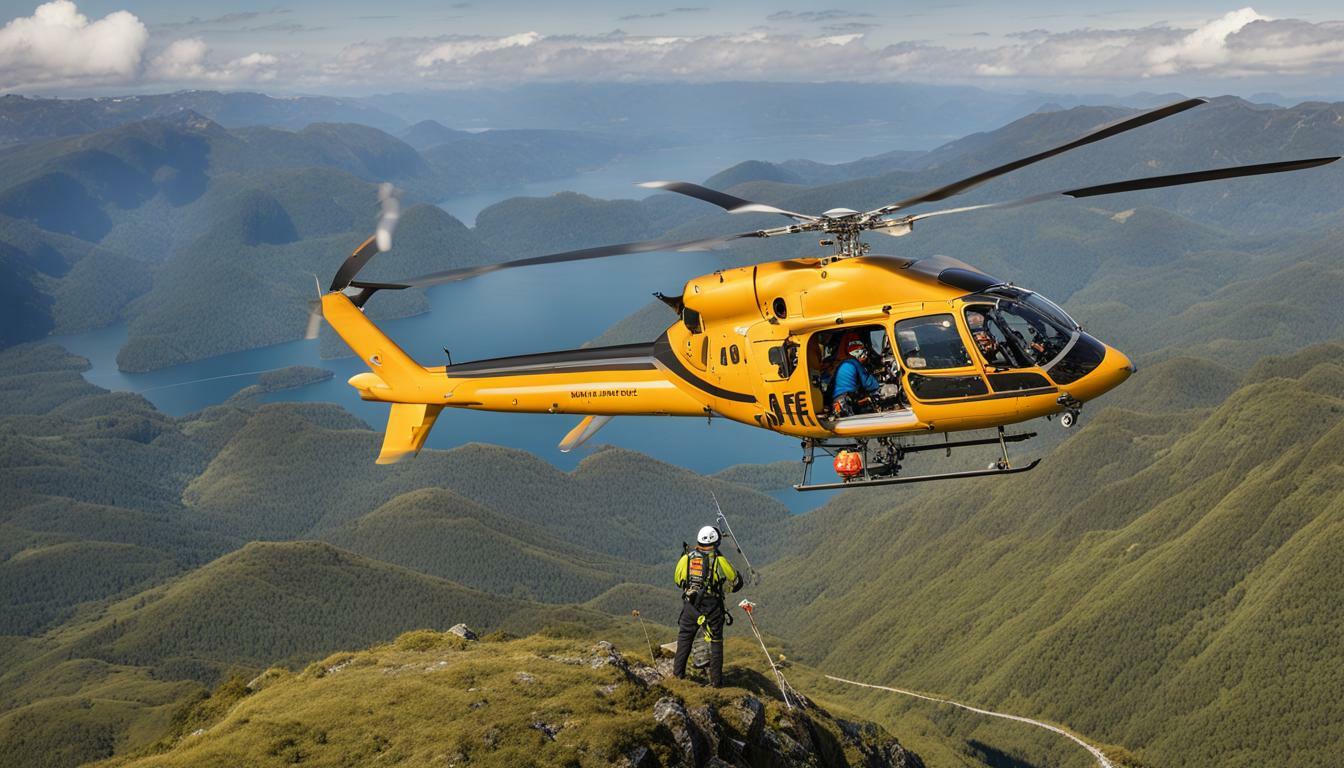
Conclusion
As a scenic helicopter photographer, safety should always be a top priority. Proper emergency preparedness can go a long way in ensuring a successful and secure aerial photography experience. Investing in essential first aid kits, safety gear, and training can make all the difference in addressing potential injuries and emergencies.
It is crucial to conduct regular safety checks and follow necessary safety guidelines to mitigate potential risks. Utilizing safety tools and equipment designed for scenic helicopter photography can help enhance the overall photography experience while prioritizing health and safety.
Remember to communicate effectively with the flight crew, secure equipment and maintain seatbelt usage, and assess weather conditions before taking off. By taking proactive measures and investing in proper safety gear and training, scenic helicopter photographers can capture breathtaking aerial landscapes while ensuring their own safety and that of their team.
